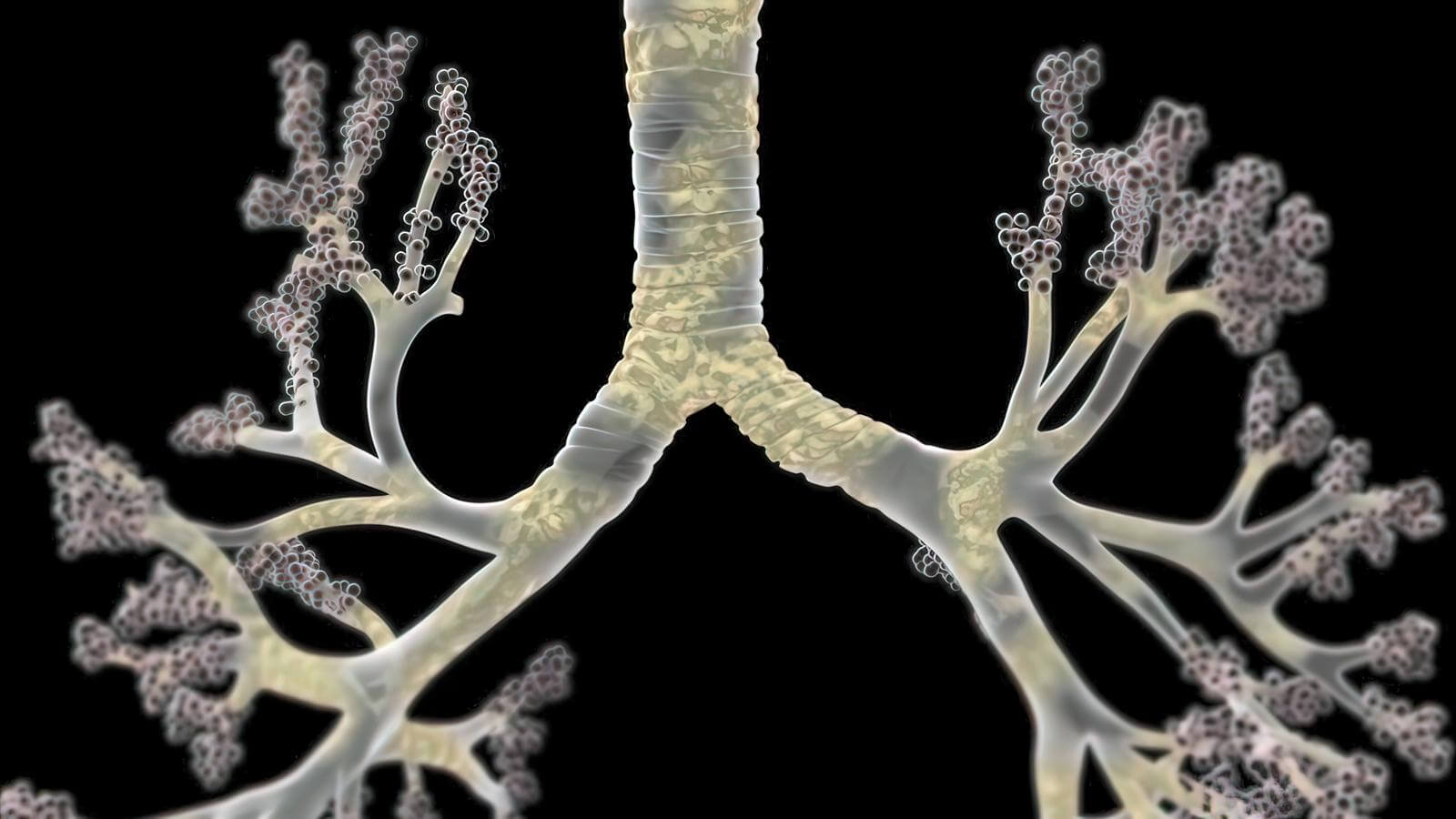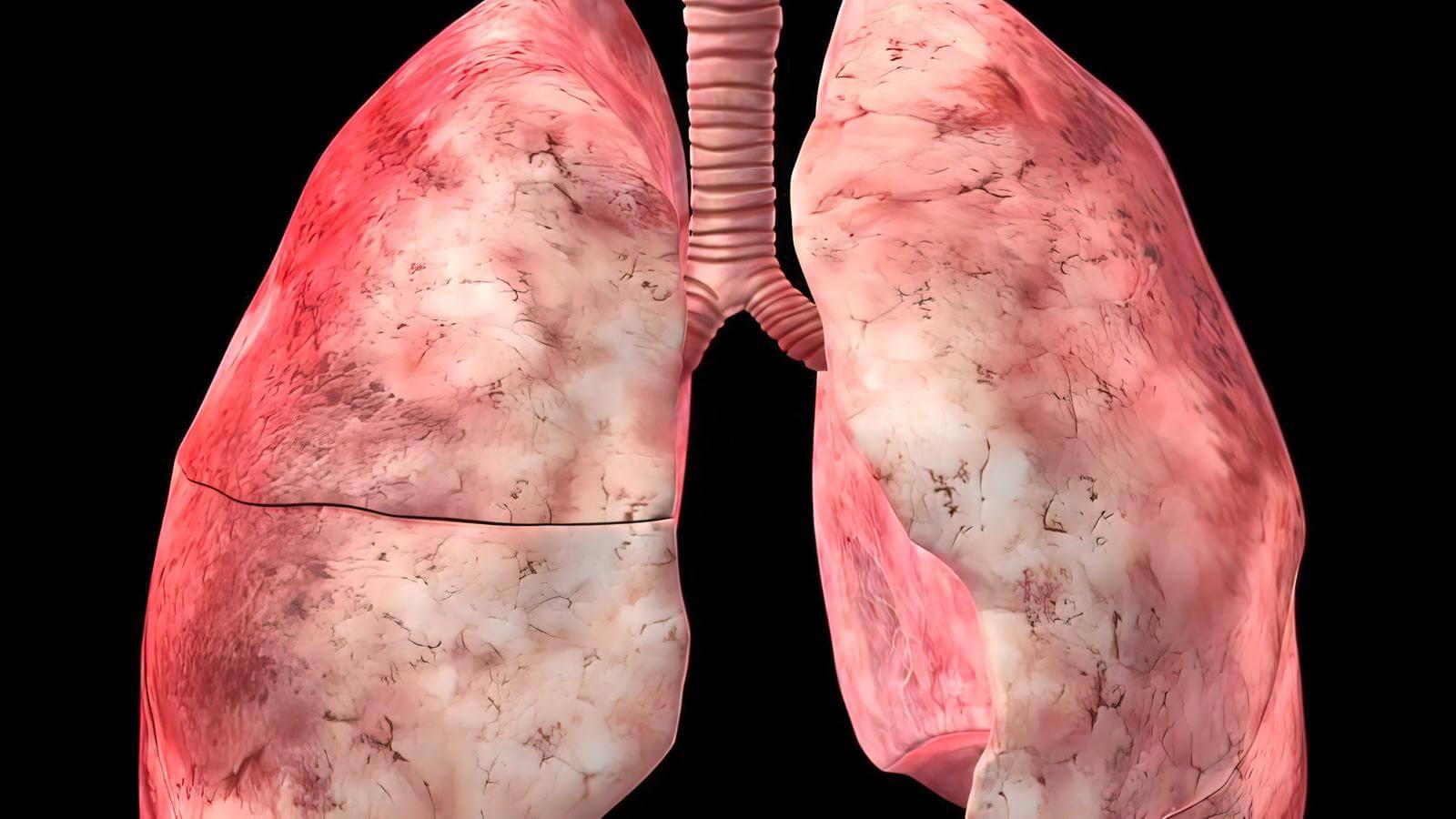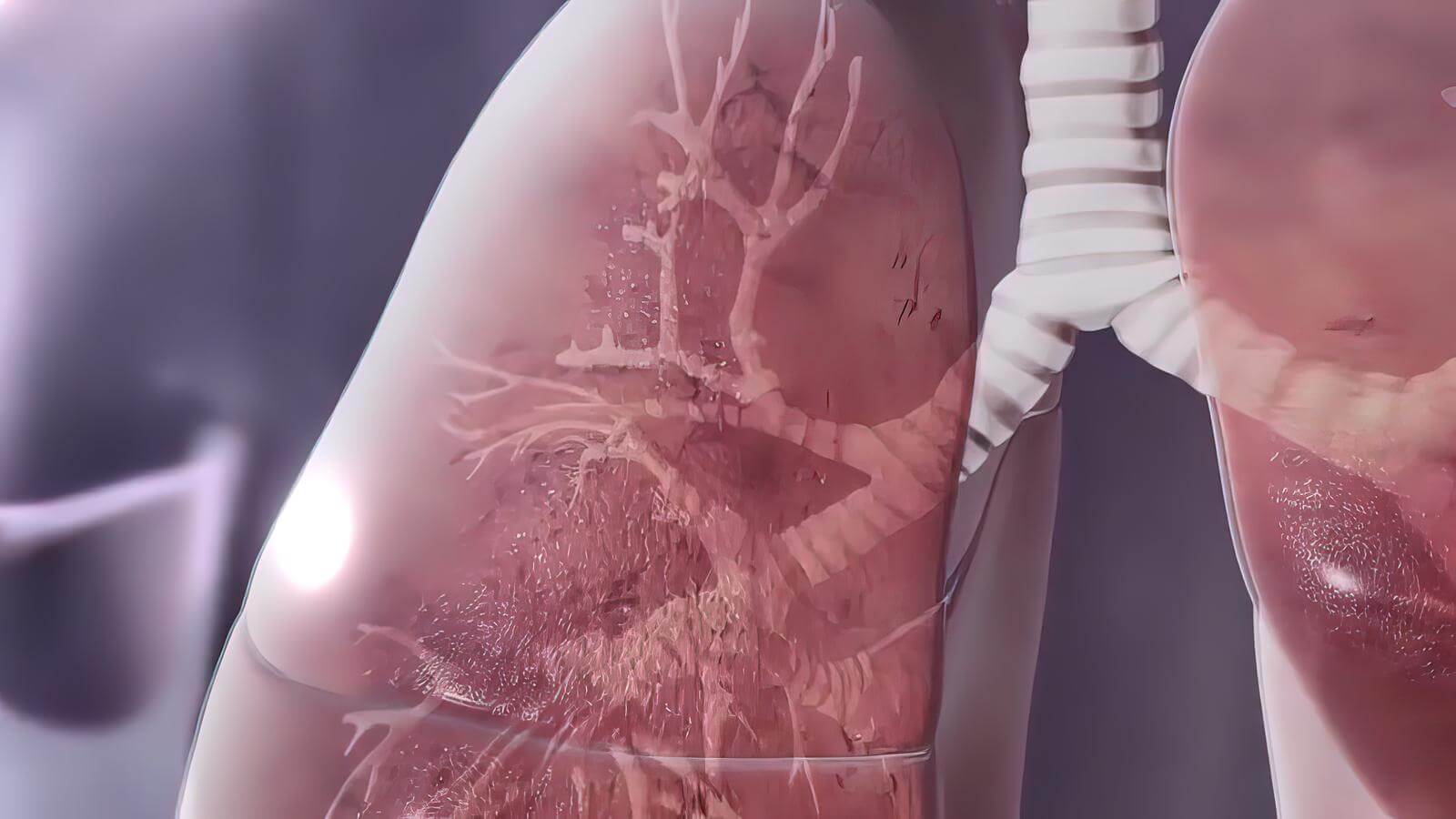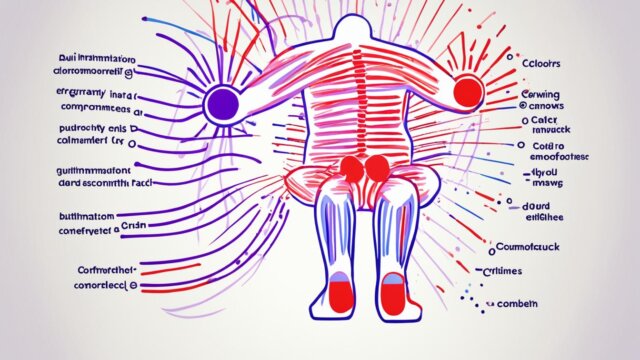FTC disclaimer: This post may contains affiliate links and we will be compensated if you click on a link and make a purchase.
Bronchitis is a common respiratory disease caused by bronchi inflammation, the tubes that carry air from the trachea to the lungs. It is characterized by coughing, wheezing, chest tightness, shortness of breath, and sometimes fever.
Bronchitis is usually caused by viral infections such as influenza, parainfluenza, adenovirus, coronavirus, rhinovirus, and RSV.
However, bacterial infection may also cause bronchitis. In addition, allergic reactions, asthma attacks, and smoking are among the most common causes of bronchitis.
Bronchitis is generally treated with antibiotics, cough medicines, and rest. Some patients may require steroids to reduce inflammation. A doctor will diagnose bronchitis based on symptoms and physical examination.
If you suspect that you have bronchitis, then visit your doctor immediately. He will examine you and perform tests to determine whether you have bronchitis or another condition. A chest x-ray may also rule out any underlying lung problems.
Bronchitis Causes, Symptoms, Diagnosis, Treatment
What is Bronchitis?

Bronchitis is an inflammation of your airways caused by infection. Your airways are your windpipe and the tubes that take oxygen into your body.
They run down each side of your throat and connect to your lungs. When you breathe, the air passes through your nose and mouth and goes into your windpipe, which travels down to your lungs.
In your lungs, the air gets filtered and exchanged for carbon dioxide. Then it flows back up through your windpipe and nose and mouth again.
Bronchitis is when the tube that carries air into your lungs gets inflamed and swollen.
When you have acute bronchitis, you’ll probably feel like you’re coming down with a cold. But chronic bronchitis can make you cough up phlegm almost every day.
In most cases, bronchitis is caused by viruses. Sometimes bacteria are involved too.
Acute bronchitis lasts about three weeks. Chronic bronchitis can go on for months or even years. People with lung diseases such as emphysema or asthma are especially susceptible to bronchitis.
Types of Bronchitis: Acute and Chronic Bronchitis
Acute and chronic varieties of bronchitis exist. Acute bronchitis is one of the most common lung diseases in the United States.
Acute bronchitis begins suddenly, often after a cold, but usually only lasts a few weeks.
Two to three percent of the American population suffers from chronic bronchitis, and approximately eleven million Americans are diagnosed with chronic bronchitis annually.
Chronic bronchitis may present as either recurrent bouts of acute bronchitis, or the lung disease may linger for long periods of time.
Chronic bronchitis eventually becomes a permanent lung disease that can significantly lower quality of life and shortens lifespan.
Bronchitis Symptoms: Dyspnea, Wet Cough, and Other Symptoms
Many symptoms characterize bronchitis. The most obvious is a productive, or “wet,” cough that produces mucus. The mucus is often thick and discolored. Accumulating mucus also makes it necessary for people to clear their throats frequently.
Dyspnea is the medical term for shortness of breath. Excess mucus makes it difficult to breathe properly, so dyspnea is a common bronchitis symptom.
A side effect of mucus-caused dyspnea is wheezing: the infected person makes a thin, whistling noise when breathing.
Acute Bronchitis Symptoms, Causes, Treatment, and Prevention

Acute bronchitis is more common than chronic bronchitis. However, recurrent episodes of acute bronchitis can eventually lead to chronic symptoms.
A lingering wet cough and other bronchitis symptoms should always be brought to your doctor’s attention.
Children and the elderly are most likely to develop acute bronchitis. Peak incidence rates occur under the age of 5 years and over 65.
The Common Cold and Other Causes
Rhinoviruses, the viral family that causes the common cold, are most likely to trigger bronchitis. The common cold is an upper respiratory viral infection. Upper respiratory infections account for up to 95 percent of acute bronchitis cases.
Cigarette smokers have a greater than normal risk of acute bronchitis. Smoking irritates the bronchial tubes, leaving them less resistant to the common cold and other viruses.
People whose occupations expose them to large amounts of dust also have a greater risk of developing bronchitis. Coal miners and granary workers are especially at risk.
Acute Bronchitis Symptoms
Characteristic acute bronchitis symptoms include:
- “flu” symptoms
- “wet,” mucus-producing cough
- Discolored, thick mucus
- Fever
- Tight chest
- Wheezing.
Early symptoms of acute bronchitis can easily be mistaken for the common cold. Bronchitis may begin with a “tickle” in the throat.
An early bronchitis cough, like a common cold cough, is dry. The cough begins to produce mucus within days, sometimes even hours.
A Lingering Cough
Bronchitis symptoms generally clear up within a few weeks. The cough, however, may take over a month to clear up.
Any cough that lingers more than a month after other bronchitis symptoms have disappeared should be evaluated by a doctor.
The cough may be an indication of asthma or pneumonia. Asthma should also be considered if acute bronchitis occurs frequently.
Treatment Options for Bronchitis Symptoms
The common cold is usually caused by a viral infection, which does not respond to antibiotics, so acute bronchitis must usually run its course.
However, a bad cough producing foul-smelling or blood-tinged mucus or associated with high fever can sometimes be due to a bacterial infection. When in doubt, visit your doctor, who can prescribe antibiotics if needed.
Treatment is usually confined to alleviating bronchitis symptoms if due to a virus.
Possible treatment strategies include:
- maintaining or upping fluid intake
- resting until fever breaks
- using a cool mist humidifier to soothe the bronchial tubes.
In some cases, bronchodilators may be prescribed to open the lung’s airways and help move mucus out of the bronchial tree. Bronchodilators are inhaled medications used to treat asthma.
Prevention Tips
The common cold and other upper respiratory viruses can spread by sneezing, coughing, or touching.
Washing hands regularly and thoroughly helps reduce the risk of contracting a cold or other viruses.
Occupational exposure to dust or fumes should be avoided whenever possible. Wear a respirator or protective face mask whenever working with substances that can irritate the bronchial tree. Smokers should quit smoking.
Symptoms and Health Complications of Chronic Bronchitis

Chronic bronchitis is a mucus-producing cough that cannot be explained by other health problems and lasts for at least three months of the year, for at least two consecutive years.
Chronic bronchitis is incurable and causes many serious health complications as it progresses.
Chronic Bronchitis and Lung Health
Chronic bronchitis causes inflammation of the bronchial tubes: the airways responsible for moving air in and out of the lungs. Chronic inflammation eventually scars the bronchial tubes.
In response to inflammation, excessive amounts of mucus are produced. The mucus clogs the already damaged bronchial tubes, making breathing difficult.
Less airflow restricts the ability to clear the airways of mucus, creating a good environment for bacterial growth.
Symptoms of Chronic Bronchitis
A persistent, “wet” cough is the primary symptom of chronic bronchitis. The cough may appear after a cold.
With every cold or upper respiratory infection, the cough lasts longer until, finally, the cough is a permanent symptom.
Many people don’t seek treatment simply because they have become used to coughing. People who smoke cigarettes may dismiss chronic coughing as “smoker’s cough.”
Other symptoms of chronic bronchitis include:
- Fatigue
- Headaches
- Shortness of breath
- Swelling of the ankles, feet, or legs
- Thick, discolored sputum/phlegm
- Tightness in the chest
- Wheezing.
Cigarettes, Smoking, and Chronic Bronchitis
Chronic bronchitis usually affects people over the age of forty who are long-term cigarette smokers.
Cigarette smoking irritates the bronchial tubes and leaves them vulnerable to infection and inflammation. Quitting cigarette smoking is the most effective way to slow the progression of chronic bronchitis.
Health Complications
Chronic bronchitis causes serious health complications. Mucus accumulation increases the risk of lung infections and pneumonia.
Years of labored breathing may result in heart failure, especially if oxygen levels in the blood drop dangerously low.
Cigarette smoking, and exposure to second-hand cigarette smoke, weaken the already damaged lungs of chronic bronchitis sufferers. Cigarette smoke increases the risk of secondary health complications, including pneumonia.
COPD and Chronic Bronchitis
Chronic bronchitis can result in a lung disease called COPD or chronic obstructive pulmonary disease. COPD is an umbrella term for many health complications that affect the lungs.
While the condition can be caused by chronic bronchitis alone, COPD is more often caused by a combination of chronic bronchitis and emphysema.
Although COPD has no cure, treatments are available that can slow the progression of the disease.
Causes and Risk Factors for Chronic Bronchitis

Chronic bronchitis occurs when the bronchial tubes become irritated and inflamed, resulting in a chronic cough and other bronchitis symptoms.
The inflammation and resulting mucus production damage the cilia, the fine hairs responsible for moving material out of the airways.
As the cilia are damaged and lose their ability to function, mucus plugs into the airways, obstructing breathing.
Cigarettes and Smoking: The Primary Cause of Chronic Bronchitis Symptoms
Smoking cigarettes is the primary cause of chronic bronchitis symptoms.
Long-term use of cigarettes (or exposure to second-hand cigarette smoke) irritates the bronchial tubes and damages the sensitive cilia.
It may take many years for cigarettes to do this damage; smokers usually diagnose chronic bronchitis after age forty.
Cigarettes and smoking are often associated with a chronic cough. This chronic cough is often a symptom of bronchitis. This “smoker’s cough” indicates that cigarettes irritate the airways.
Many smokers dismiss a chronic cough as a natural consequence of smoking cigarettes and act as if nothing is to be done about it.
Ignoring chronic bronchitis symptoms only makes them worse over time. Quitting cigarettes, while a difficult goal to achieve, reduces the severity of bronchitis symptoms, including the wet chronic cough.
Other Irritants
Although cigarettes cause chronic bronchitis in most cases, other irritants may also be responsible for bronchitis symptoms. Possible causes include:
- Bacterial infections and microorganisms
- Chemical fumes
- Dust
- Environmental pollution.
Asthmatic Bronchitis and Bronchitis Symptoms
Asthma may cause apparent chronic bronchitis symptoms in children and teenagers. Severe chronic asthma can cause permanent airway obstruction, resulting in a health condition known as asthmatic bronchitis.
Asthmatic bronchitis has many of the same symptoms as chronic bronchitis.
Chronic Bronchitis Risk Factors
- Smoking cigarettes
- Over forty years old
- Exposure to occupational hazards
- Recurring lung infections.
Medical Diagnosis of Bronchitis

Reaching a medical diagnosis of chronic bronchitis is a process of elimination. Other possible lung diseases must be ruled out to arrive at a diagnosis of bronchitis.
In most cases of chronic bronchitis, symptoms of emphysema are also discovered during the medical diagnosis. When both diseases co-exist, the condition is called COPD (chronic obstructive pulmonary disease).
Medical History: Listing Symptoms
Gathering a medical history of symptoms is the first step in a chronic bronchitis diagnosis.
Characteristic symptoms of chronic bronchitis include a wet cough that produces mucus, shortness of breath, wheezing, and frequent throat clearing.
How long symptoms have been experienced is especially important. A medical diagnosis of chronic bronchitis can only be made if coughing and other symptoms have been present for at least three months out of the year for two years.
Physical Exam: How Well Do Your Lungs Function
The doctor will use a stethoscope to listen to lung sounds during the physical exam. The physical exam may reveal sounds of wheezing, a whistling sound in the lungs.
Wheezing is due to inflamed airways and the accumulation of mucus in the bronchial tubes. A spirometry test may be ordered if the physical exam reveals abnormal lung sounds consistent with a medical diagnosis of chronic bronchitis.
Spirometry Testing
Spirometry measures lung function. During a spirometry test, your breathing is monitored as you breathe into a tube attached to a spirometer.
The spirometry machine measures lung volume and how easily air travels through the lungs. This provides the information necessary to make a medical diagnosis.
If the spirometry results and the physical exam suggest a need, further testing may be ordered.
Additional Testing: Chest X-Rays and Mucus Analysis
Sputum tests: A sputum test requires a sample of mucus. The mucus is analyzed for signs of infection that may be responsible for symptoms. Excess mucus is an inviting breeding ground for bacteria.
Exercise testing: This provides additional information about lung function.
Pulmonary Function Tests: In addition to spirometry, pulmonary function tests measure how effectively the lungs can ventilate gases.
For example, the carbon monoxide-diffusing capacity can be measured to illustrate how effectively gases pass from the lungs to the bloodstream. Chronic bronchitis sufferers often have a decreased diffusing capacity.
Blood gas readings: Severe symptoms may require blood gas readings to determine the amount of oxygen and carbon dioxide in the bloodstream. Low levels of oxygen require treatment with an oxygen mask.
Chest x-rays: Chest x-rays are used during a medical diagnosis to rule out other possible symptom causes, including pneumonia and lung cancer.
Bronchitis Treatments (Medications, Smoking Cessation)
Chronic bronchitis cannot be cured: treatment concentrates on slowing disease progression and providing symptom relief. Different treatment strategies and medications are used depending on individual needs and the stage of the disease.
No matter how severe chronic bronchitis symptoms, the treatment most often prescribed to smokers is clear: quit smoking.
The Best Treatment: Quit Smoking
Smokers have higher incidence rates of chronic bronchitis and COPD (chronic obstructive pulmonary disease) than nonsmokers.
Once people quit smoking, chronic bronchitis symptoms lessen, and the disease’s progression slows.
Most smokers are well aware of the health risks associated with smoking. Smokers are equally aware of just how difficult it is to quit smoking.
Don’t try to do it alone when you decide to quit smoking. Smokers can get help and support from their family members and friends.
Some smokers find it easier to quit smoking if they do so with others: support groups for smokers trying to quit are available in many areas.
Ask your doctor to help you quit. Some medications, including nicotine “patches” and some antidepressants, can help you quit smoking. If you’re living with chronic bronchitis, quitting is the best treatment.
Bronchodilator Therapy
Inhaled bronchodilators, the same medications used in the treatment of asthma, may also be used to alleviate bronchitis symptoms.
Bronchodilators allow the airways to expand, making it easier to breathe. The medications also stimulate the muscles responsible for breathing.
Examples of inhaled bronchodilator medications include beta-agonists, ipratropium bromide, and theophylline.
Anti-Inflammatory Medications
Anti-inflammatory corticosteroid medications are sometimes used to alleviate chronic bronchitis symptoms.
Clinical trials have proven that inhaled steroids are useful in some patients for treating COPD, especially in high doses.
Long-term high-dose corticosteroid medications can produce severe side effects, such as osteoporosis and a weakened immune system.
Clinical trials are investigating the effectiveness of other anti-inflammatory medications for bronchitis treatment.
A group of medications known as phosphodiesterase inhibitors is currently being evaluated for bronchitis treatment and may one day offer an alternative treatment to steroids.
Mucolytic Drugs
Mucolytic medications break up mucus, making it easier to clear the bronchial tubes. Mucolytic medications such as N-acetylcysteine and guaifenesin are sometimes used to treat chronic bronchitis.
COPD Treatment Strategies
When chronic bronchitis coexists with emphysema, the resulting symptoms are COPD or chronic obstructive pulmonary disease.
COPD treatment often employs the same strategies and medications as chronic bronchitis treatment. In addition, the following treatment options are often recommended.
- Breathing exercises
- Flu shots
- Oxygen masks
- Pneumonia immunizations
- Lung transplants.
Outlook
Bronchitis is a condition that affects the lungs and airways. The main symptoms are coughing, shortness of breath, and chest pain.
Bronchitis can be caused by a viral infection, bacteria, or smoking. Treatment for bronchitis includes rest, drinking plenty of fluids, and taking over-the-counter medications.
If you think you may have bronchitis, see your doctor for a diagnosis.








